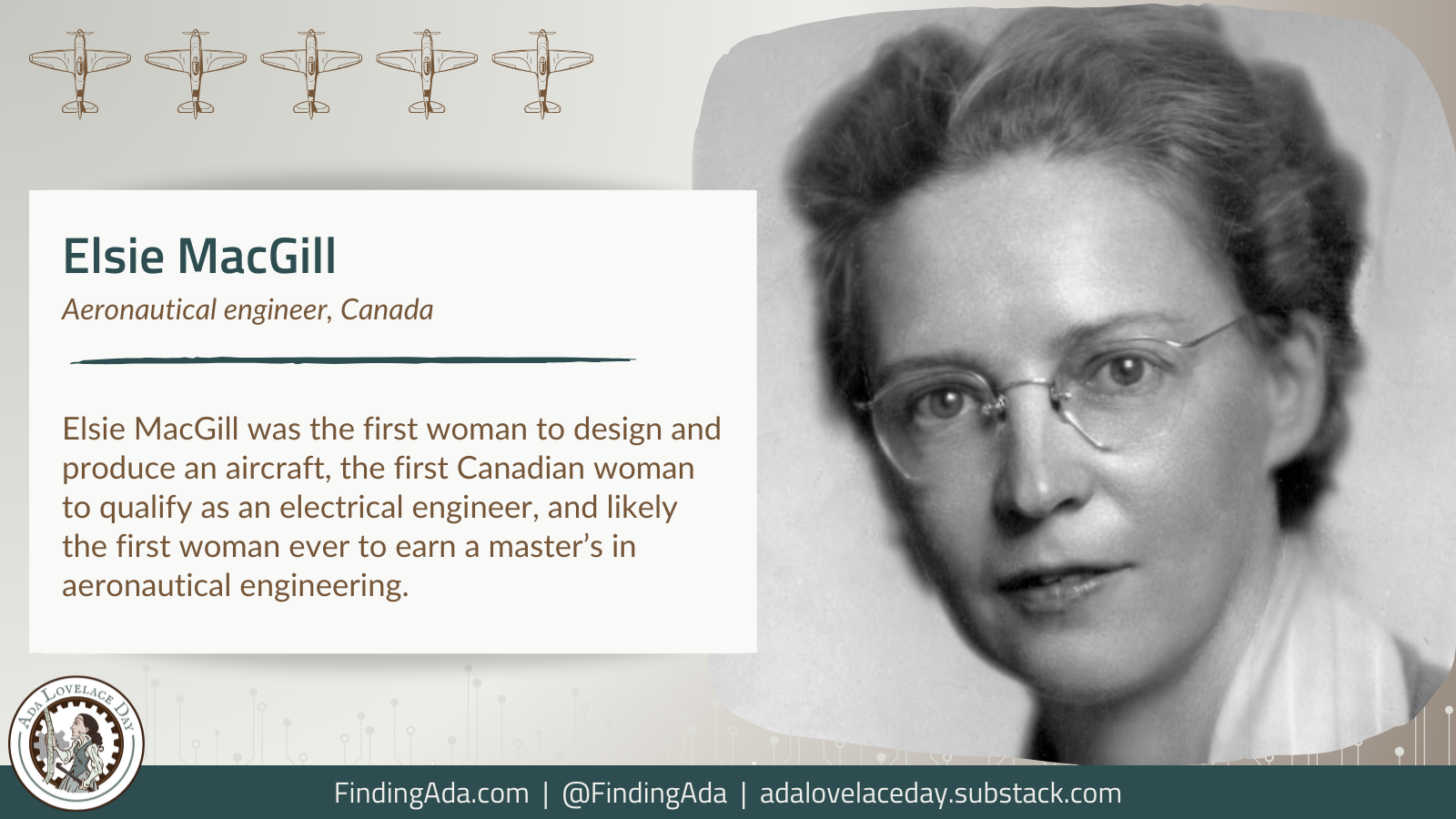Elsie MacGill
Nicknamed “Queen of the Hurricanes”, Elizabeth “Elsie” Muriel Gregory MacGill was the first woman to earn an electrical engineering degree in Canada. She was also the first woman in North America – and likely the world – to earn a master’s degree in aeronautical engineering, as well as the first woman to design and produce an aircraft. During World War Two, she led the Canadian production of a key model of fighter plane.
MacGill was born on 27 March 1905 in Vancouver. She began her bachelor’s in electrical engineering at the University of Toronto aged 18, becoming Canada’s first woman graduate in that subject in 1927. Upon finishing her degree, she relocated to Michigan in the US, working as a mechanical engineer for an automobile company.
By this point, MacGill already had a nascent interest in the rapidly-developing field of aeronautical engineering. But she was motivated to learn more when her firm started making planes, beginning graduate studies in aeronautical engineering at the University of Michigan. When she completed her master’s in 1929, she became the first woman in North America (and probably the world) to do so.
A bout of polio put MacGill’s career on hold for several years, but she completed postgraduate studies at the Massachusetts Institute of Technology (MIT) in 1934. She was almost immediately hired as an assistant engineer at Fairchild Aircraft Ltd, an aeronautical company in Quebec known for its innovative approach. There, she worked on many aircraft designs, routinely insisting on accompanying pilots on dangerous test flights to assess the performance of her planes.
MacGill’s star really began to rise in 1938, the year she turned 33. In March, she presented a much-praised paper to the Royal Aeronautical Society in Ottawa. She was accepted into the Engineering Institute of Canada, making her the professional association’s first female member. And she was hired as the chief aeronautical engineer at Canadian Car & Foundry (Can Car) in Ontario, the first woman in the world to hold such a position.
Can Car was a major Canadian transport manufacturer, and most of MacGill’s time there overlapped with World War II. During that period, she helped transform Canada into a global hub for aviation construction. She led the design, construction and aerial testing of the Maple Leaf II Trainer (recognised as the first aircraft ever entirely designed and produced by a woman) and had the Can Car plant retooled within a year, enabling it to rapidly manufacture Hawker Hurricane planes. With MacGill serving as designer and leader of production, these aircrafts played a critical role in WWII air combat, flown by Canadian and Allied airmen in the Battle of Britain.
MacGill also designed the first successful winterized version of a high-speed aircraft, equipping the Hawker with skis and de-icing equipment. In 1940, she wrote a paper based on her time at Can Car, “Factors Affecting Mass Production of Aeroplanes”, that was later published in The Engineering Journal.
MacGill left Can Car in 1943 and founded a consulting engineering company. Increasingly focused on civilian aircraft, she joined the International Civil Aviation Organization (ICAO) as a Canadian representative and became the first woman to serve as its technical advisor on aircraft airworthiness in 1946. She died on 4 November 1980, aged 75.
Among many awards and honours, MacGill was named to the Order of Canada in 1971, made a fellow of the Engineering Institute of Canada in 1972, and inducted into the Canadian Science and Engineering Hall of Fame in 1992. She was the subject of a Canadian stamp in 2019 and a commemorative coin issued by Royal Canadian Mint in 2023.
Further Reading
- Elsie MacGill, Wikipedia
- Elsie MacGill, The Canadian Museum of Flight
- Queen of the Hurricanes, CBC
- Elsie MacGill, 1905-1980, Wonder Woman Project
- The Life & Story of Elsie MacGill, The Royal Canadian Mint, 2023
- Elsie MacGill, Crystal Sissons & Nathan Baker, The Canadian Encyclopedia, 4 August 2023
- Elsie MacGill – the first female aeronautical engineer, Canada Aviation and Space Museum, Google Arts & Culture, 2018
- Women’s History Month Part 3: Elsie MacGill, Alicen Ricard, Westcoast Women in Engineering, Science and Technology, 20 October 2017
- Queen of the hurricanes: An engineer and feminist for the ages, ECE at University of Michigan, 10 February 2017
- Elsie MacGill is a bank note-able Canadian Woman, Engineers Canada, 23 March 2016
Written by Moya Crockett, with thanks to Stylist for their support.
